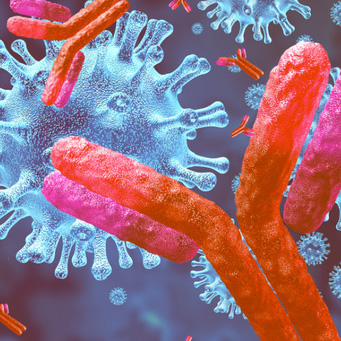Controlling the COVID-19 pandemic |  |
This is a new curriculum. We are refining the materials and teaching support according to teacher feedback. If you have any questions or comments, please use the contact form on the Get Help page and we will respond promptly. Thanks for your patience and understanding!
Lesson 4.1
How can COVID-19 be controlled?
This lesson focuses on COVID-19 as a pandemic, how an infection spreads, how spread can be measured, and how public health measures can control a pandemic.
Lesson Objectives
By the end of the lesson, you will be able to…
- Describe R0 and its significance in transmission of infection.
- Explain herd immunity and why we need to achieve it to control a pandemic.
4.11 How are infectious diseases spread? (15 slides)
Here you’ll learn why knowing how an infectious disease spreads is critical for managing pandemics.
4.12 Measuring how infectious diseases spread – the R number (24 slides)
Here you’ll learn about how we can determine a critical measurement for understanding disease spread.
4.13 Measuring how infectious diseases spread – dispersibility (24 slides)
SARS-CoV-2 infections spread differently than many other infectious diseases. Here you’ll learn about the importance of superspreaders in how COVID-19 spreads, and what an 80/20 strategy for dealing with infection is.
4.14 Detecting transmission (24 slides)
In this section, you’ll focus on the public health strategies we use to detect transmission of infectious diseases and what will work best for COVID-19.
4.15 How public health measures can control spread (30 slides)
In this section, you’ll focus on the public health strategies we use to control transmission of infectious disease.
You can take a break after slide 15!
4.16 How decreased susceptibility prevents spread (27 slides)
In this section, you’ll focus on the public health strategies we use to control transmission of infectious disease.
4.17 Eliminating COVID-19 – timing is everything! (10 slides)
In this last section, you will address the question of whether the outcome of the COVID-19 pandemic would have been significantly altered if we had started to respond sooner.
4.18 Vocab review
4.19 Apply your new knowledge!
Choose one (or both) of the following articles to read.
- Read the following article from Atlantic magazine about how COVID-19 got out of hand. The link is here.
- Alternatively, read the following article from Nature about current knowledge about how well masks work. The link is here.
Documents
4.19 Reading worksheet
Lesson 4.2
How does the immune system get rid of SARS-CoV-2?
This lesson focuses on how adaptive immunity clears SARS-CoV-2 infections, and how it can be harnessed to produce vaccines.
Lesson Objectives
At the end of this lesson you will be able to:
- Describe how the adaptive immune system deals with viral infections.
- Explain how vaccines use immune memory to combat infection.
- Describe how a vaccine is designed and explain what makes a good vaccine.
4.21 How the innate and adaptive immune systems work together (32 slides)
Here you’ll learn about the adaptive immune system to complete your understanding about how the immune system vanquishes infections.
You can take a break after slide 18!
4.22 How does the adaptive immune system deal with viral infections? (24 slides)
Now you’re going to explore how the cells of the adaptive immune system coordinate to finally get rid of a virus infection.
4.23 How does the adaptive immune system remember virus infections? (9 slides)
In this section, you’ll explore how the adaptive immune system retains a memory of previous infections, so it can respond more quickly if it encounters them again.
4.24 Harnessing the immune system against SARS-CoV-2 – building a vaccine (28 slides)
It turns out our immune system already has all the components needed to eliminate SARS-CoV-2 infections – if we’re lucky. In this section, you’ll learn about the challenges of building a good vaccine.
You can take a break after slide 22!
4.25 How good must a vaccine be? (26 slides)
In this section, you’ll learn how to figure out how we achieve herd immunity with vaccines, and will use your calculations to make predictions about whether we’ll be able to achieve herd immunity with a COVID-19 vaccine.
4.26 How safe must a vaccine be? (28 slides)
Here you’ll learn about the effects, wanted and unwanted, that vaccines have, and why public confidence matters if a vaccine program is to work.
4.27 Testing a COVID-19 vaccine (26 slides)
In this last section, you’ll apply what you’ve learned to work with some case studies that illustrate the challenges in designing effective vaccine trials.
4.28 Vocab review
4.29 Apply your new knowledge!
Choose one (or both) of the articles to read.
- Read the following news article from the National Institutes of Health Director Dr. Francis Collins about a surprising finding regarding immunity to COVID-19. You can find the link here.
- Alternatively, read the following Washington Post article that keeps us up-to-date on how the vaccine trials are going. You can find the link here.
Documents
4.29 Reading worksheet
Lesson 4.3
Should schools stay open or close in response to a spike in COVID-19 cases? A Socratic seminar
In this last lesson, you will have an opportunity to understand the many different viewpoints and complicated decisions that cities and towns need to make when determining whether or not students should go to school in-person, or take part in remote learning, in response to COVID-19 spikes in infection. You will be given the backstory of the town of Smallville, USA, where the Mayor needs to make a plan for how to proceed with teaching and learning, and is holding a town meeting to hear perspectives from different stakeholders. Individually, in a pair or group of three, depending on the size of your class, you will be given a different stakeholder role’s perspective. You will then come up with a solution to suggest to the Mayor about what to do taking in account what you have learned about SARS-CoV-2’s biology and public health approaches. Each person or group will present their stakeholder’s story and their solution at the town meeting (class discussion). The goal is for the entire class to come to consensus about what the Mayor’s plan should be.
Lesson Objectives:
By the end of the lesson, you will be able to…
- Come up with a solution for how to close or keep schools open safely taking into account multiple different perspectives and challenges.
- Apply what you know about the biology of SARS-CoV-2 to create a solution with your peers.


